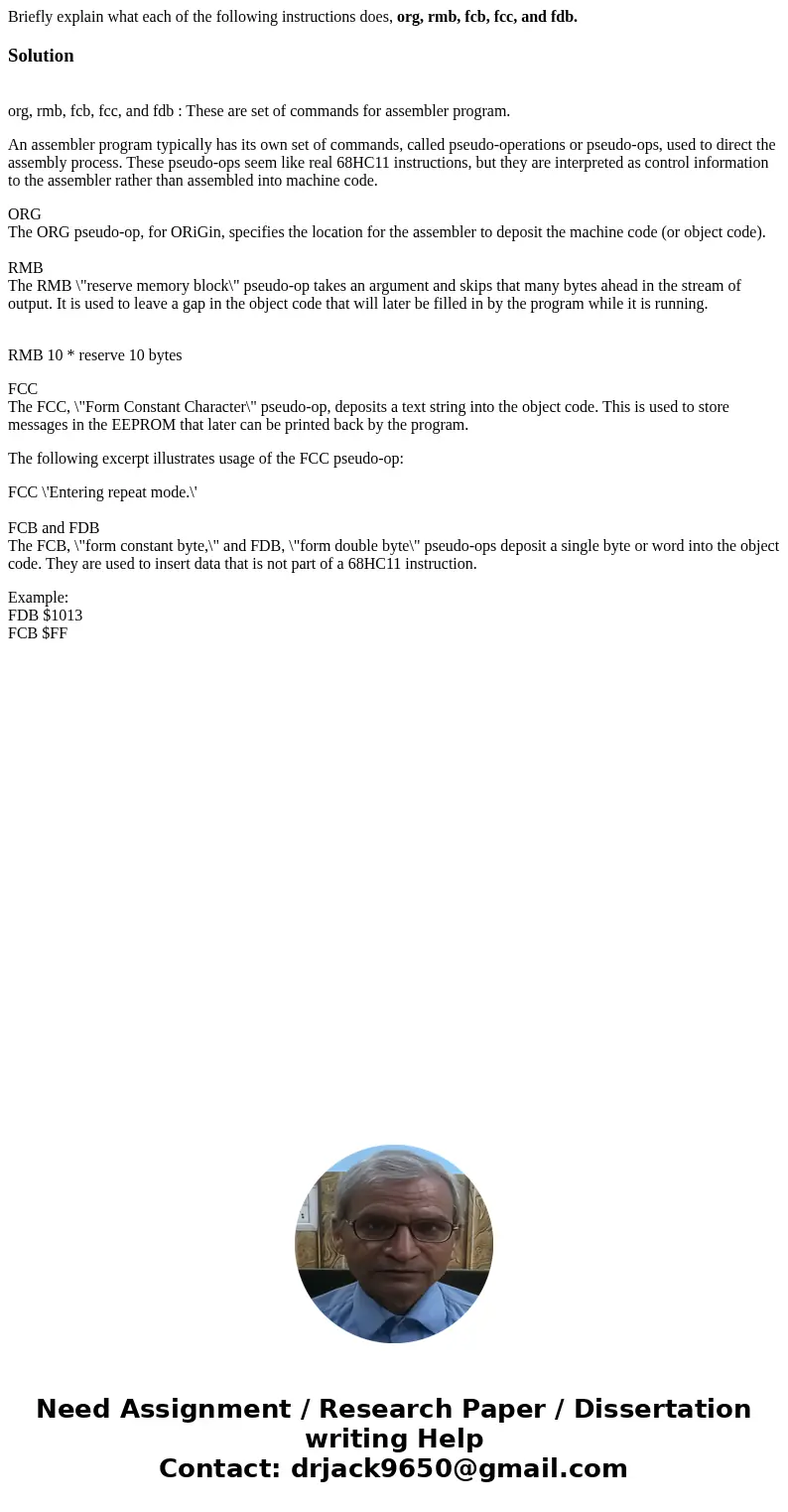Briefly explain what each of the following instructions does
Briefly explain what each of the following instructions does, org, rmb, fcb, fcc, and fdb.
Solution
org, rmb, fcb, fcc, and fdb : These are set of commands for assembler program.
An assembler program typically has its own set of commands, called pseudo-operations or pseudo-ops, used to direct the assembly process. These pseudo-ops seem like real 68HC11 instructions, but they are interpreted as control information to the assembler rather than assembled into machine code.
ORG
The ORG pseudo-op, for ORiGin, specifies the location for the assembler to deposit the machine code (or object code).
RMB
The RMB \"reserve memory block\" pseudo-op takes an argument and skips that many bytes ahead in the stream of output. It is used to leave a gap in the object code that will later be filled in by the program while it is running.
RMB 10 * reserve 10 bytes
FCC
The FCC, \"Form Constant Character\" pseudo-op, deposits a text string into the object code. This is used to store messages in the EEPROM that later can be printed back by the program.
The following excerpt illustrates usage of the FCC pseudo-op:
FCC \'Entering repeat mode.\'
FCB and FDB
The FCB, \"form constant byte,\" and FDB, \"form double byte\" pseudo-ops deposit a single byte or word into the object code. They are used to insert data that is not part of a 68HC11 instruction.
Example:
FDB $1013
FCB $FF

 Homework Sourse
Homework Sourse